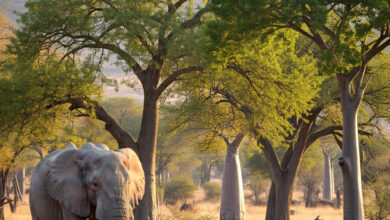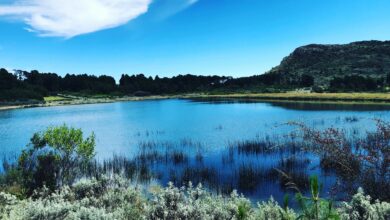Zimbabwe’s Environmental Conservation Efforts: Success Stories and Challenges

Zimbabwe’s Environmental Conservation: A Beacon of Hope
Zimbabwe’s environmental conservation efforts are raising awareness among citizens on environmental sustainability. The nation is making significant strides in environmental conservation, despite facing numerous challenges. Therefore, this article highlights some of the country’s success stories and ongoing efforts to protect its natural resources.
Conservation Success Stories
Firstly, Hwange National Park, Zimbabwe’s largest national park has seen a significant increase in wildlife populations, thanks to effective conservation efforts. Additionally, in 2023 ZimParks signed a 25-year agreement to secure a US$50 million partnership to support wildlife conservation in Hwange National Park. Furthermore, the agreement builds on the successes of the existing five-year partnership between IFAW and Zimbabwe Parks and Wildlife Management Authority. IFAW is a global non-profit that helps animals and people thrive together. This will boost Zimbabwe’s environmental conservation initiatives.
Secondly, Matobo Hills, a UNESCO World Heritage Site has been protected through community-led conservation initiatives, preserving its unique landscape and biodiversity. Furthermore, the Matobo Conservation Society is a society committed to the conservation, appreciation and sustainable use of the natural and cultural resources within the Matobo Hills region. One of the objectives of the society is to provide preservation initiatives education to the inhabitants, especially the children. This is to provide for the sustainable use, and where necessary, reclamation of the environment to future generations. Also, this education aims to contribute to a meaningful improvement in the standard of living of those who receive it.
Finally, regarding the Victoria Falls, efforts to reduce pollution and protect the falls’ natural habitat is being done to bolster preservation initiatives. Furthermore, there is the continuation of the majesty of this natural wonder by such conservation efforts.This area is a UNESCO World Heritage site, protected by legislation on both the Zimbabwe and Zambia side.
Challenges Ahead
Rampant deforestation threatens Zimbabwe’s forest preservation initiatives, with an estimated 330,000 hectares lost annually. Therefore, this is a significant threat to Zimbabwe’s environmental conservation efforts. With that, there is a need for all Zimbabweans to protect these forests as they will serve future generations in numerous ways.
Additionally, wildlife poaching remains a significant threat, with many species, including elephants and rhinos, targeted for their valuable body parts. This challenge is an ongoing one and an improvement is awareness and action to stop it will go a long way. Furthermore, if left unchecked, there will be extinction of certain wildlife.
Finally, Zimbabwe is vulnerable to climate change. With changing weather patterns affecting agriculture and wildlife habitats, conservation is vital. Furthemore, mitigation efforts to protect wildlife and its habitats are of importance. Preservation initiatives are vital to ensure sustainable environments.
Ongoing Efforts
Additionally, regarding community-led conservation, local communities are taking ownership of conservation efforts. This ensures sustainable livelihoods and environmental protection. This boosts Zimbabwe’s environmental conservation initiatives. Also, the Zimbabwean government has launched preservation initiatives to combat deforestation and poaching, including the establishment of protected areas. Finally, Zimbabwe is working with international organisations to address environmental challenges, including climate change and wildlife conservation.
Conclusion
Finally, Zimbabwe’s environmental conservation efforts have shown promise, but challenges persist. Therefore, support and collaboration are essential to protect the country’s natural resources for future generations.




